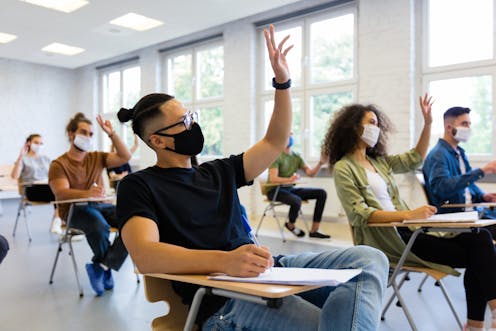Free college programs can enable more students to go to college, but it all depends on how the progr
Not all free college programs are the same. New research finds that eligibility requirements and other features influence outcomes.

The Research Brief is a short take about interesting academic work.
The big idea
Free college programs are emerging across the United States as potential mechanisms to improve college enrollment and affordability. Our research examines how the design of these programs influences their effectiveness. We argue that effectiveness depends on the answers to two questions. First, does it help more students attend and complete college? Second, how do the outcomes of the program compare with the resources invested?
Free college programs are sponsored by states, private donors and individual colleges. Some programs offer free tuition to attend a choice of colleges and universities, while others provide free tuition to attend a particular school. Programs may be available to students in a particular state, as is the case with the Oregon Promise, or a specific community, as is the case with the Kalamazoo Promise.
Different programs have different outcomes. For example, one study found that the Tennessee Promise, a program that promises free tuition and fees to graduates of Tennessee high schools who attend one of the state’s community or technical colleges, increased enrollment by 40% at the state’s community colleges. The study also found that the program increased enrollment among Black and Hispanic students. But another study found that the Milwaukee Degree Project, a program that offered one cohort of ninth graders attending selected public high schools up to US$12,000 to cover costs at an in-state institution, did not increase college enrollment. The authors concluded that the program was not effective because of its design. Few students met the program’s required 2.5 grade point average and 90% high school attendance requirement. Program officials did not do a good job of telling counselors and students about the program. And, the program was available for a limited period of time.
We used case studies to examine programs that offer free tuition to attend four community colleges. We found that programs vary in what they do to help students enroll and graduate. The programs we examined pay only the portion of tuition costs that is not covered by financial aid. That is, they provide what are called “last-dollar” awards. We found that last-dollar programs generally provide no new financial aid to low-income students, since tuition at community colleges is typically less than what low-income students receive from Federal Pell Grants. A last-dollar approach does not help low-income students pay other costs, like books, housing and food.
Why it matters
A federal free community college initiative is reportedly being crafted by White House officials. A federal initiative would build on the many free college programs already created by states and communities across the nation.
What still isn’t known
More insight is needed on how students view free college programs and why they do or don’t participate. This information will help program staff and other stakeholders do a better job of helping people know what these programs have to offer.
What’s next
In another paper, we explore why free community college programs have particular eligibility requirements, financial awards and other program supports. We found that some programs establish eligibility requirements to control costs. Eligibility requirements limit the number of students who can participate. Concerns about costs also help explain why some programs offer only last-dollar financial awards.
Our findings suggest the need to consider how staff share program information, how they work with high schools to encourage students to apply and how they help students meet eligibility requirements. The success of free college programs may also depend on how officials collect data to identify a program’s strengths and weaknesses and use that data to better serve students.
[Like what you’ve read? Want more? Sign up for The Conversation’s daily newsletter.]
This project was supported by a subcontract from Research for Action (RFA) that was funded by the Bill & Melinda Gates Foundation. The content is solely the responsibility of the authors and does not necessarily represent the views of the funders.
Elaine W. Leigh and Jeremy Wright-Kim do not work for, consult, own shares in or receive funding from any company or organization that would benefit from this article, and have disclosed no relevant affiliations beyond their academic appointment.
Read These Next
Damn the torpedoes! Trump ditches a crucial climate treaty as he moves to dismantle America’s climat
At the same time, Americans have been facing worsening storms, wildfires and deadly heat waves.
George Washington’s foreign policy was built on respect for other nations and patient consideration
For the nation’s first president, friendliness was strategy, not concession: the republic would treat…
The 6-7 craze offered a brief window into the hidden world of children
From Pig Latin to Punch Buggy, kids have long used nonsensical language, gestures and games to carve…





